Versatile Platform and Pipeline
Versatile Nanoparticle Platform
Our proprietary Pdx-NP™ is innovative silica-based drug delivery technology that can load multiple cargo types at once (e.g., oligonucleotides, adjuvants, antibodies, chemotherapeutics, proteins).
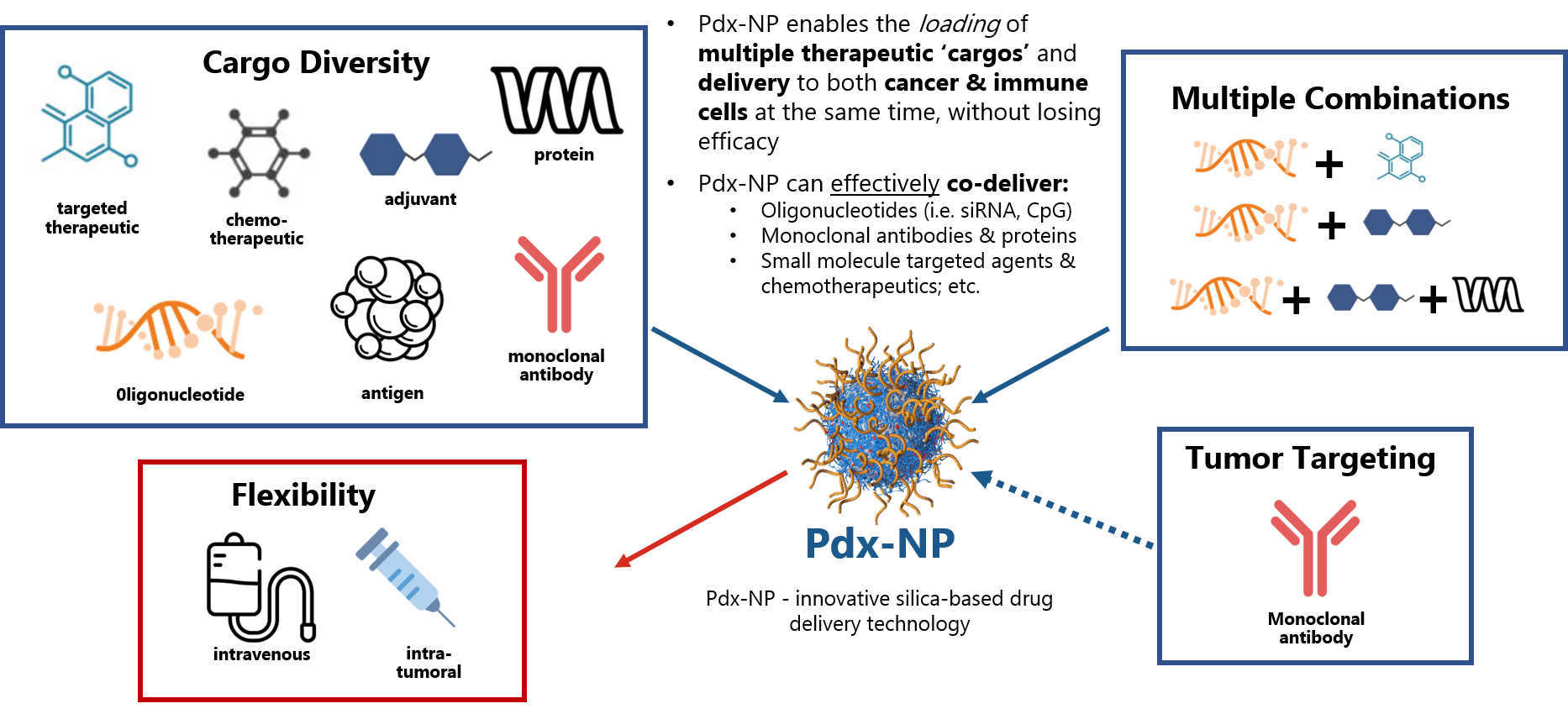
Pdx-NP: Silica-Based ‘Next Generation’ Drug Delivery Platform
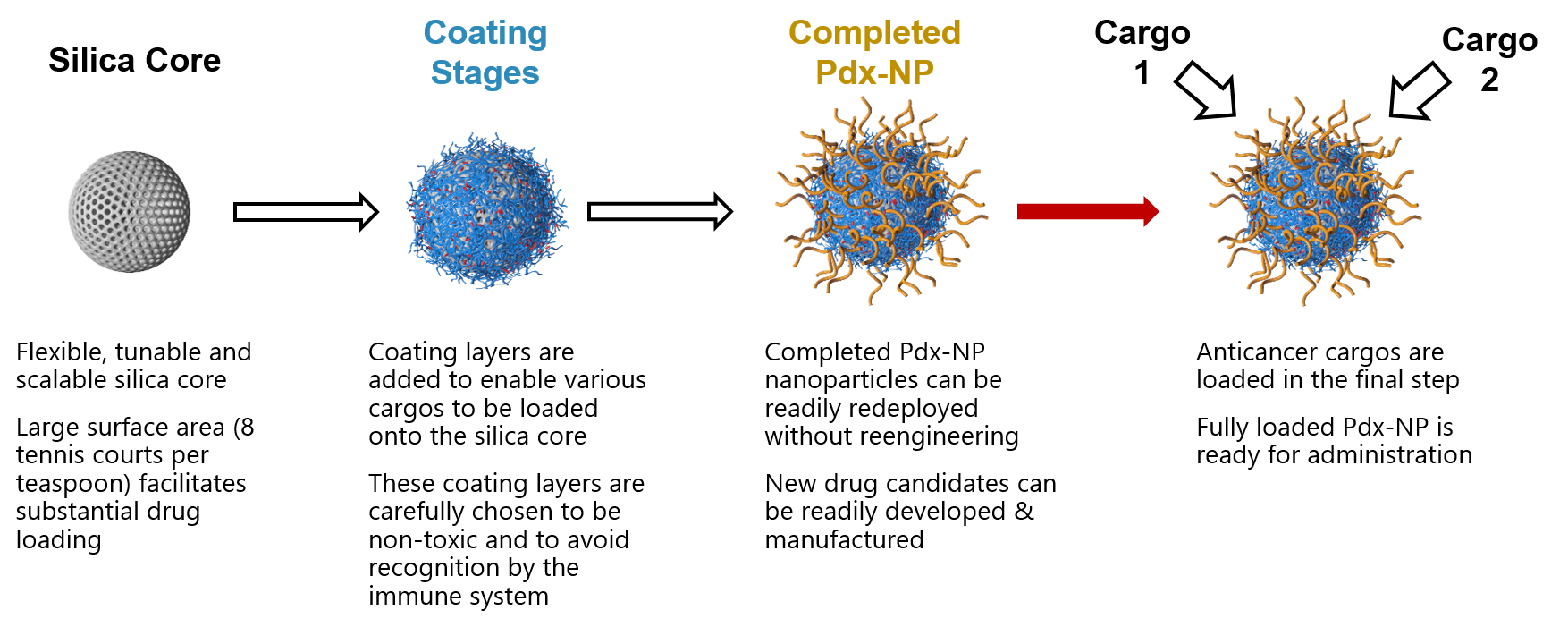
Pipeline
Yantasee Lab in collaboration with PDX Pharmaceuticals, Inc. is advancing a pipeline of differentiated therapeutic candidates for oncology, fibrosis, and vaccine against viral infection.
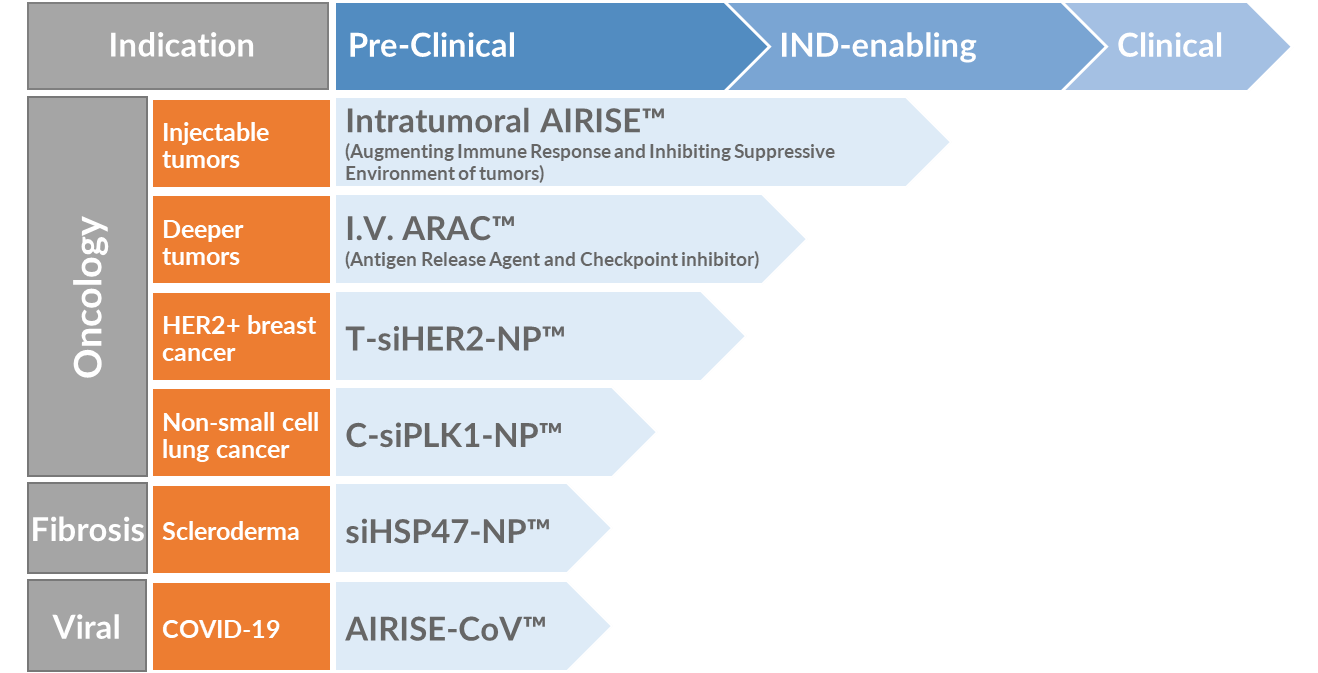
AIRISE™ is an innovative, next generation immunotherapeutic.
(Nanoparticle-based Augmenting Immune Response and Inhibiting Suppressive Environment of tumors)
For the CO-DELIVERY of selected therapeutics (siRNA and adjuvant) to trigger anti-tumor immune response.
AIRISE™ utilizes a local treated tumor as a depot for neo-antigens in situ to trigger adaptive immunity (cytotoxic T cells) that kills tumors everywhere in the body.
AIRISE™ is an off-the-shelf drug with personalized effect without tedious neoantigen identification in conventional vaccines.
In-situ tumor vaccination triggers adaptive immune response.
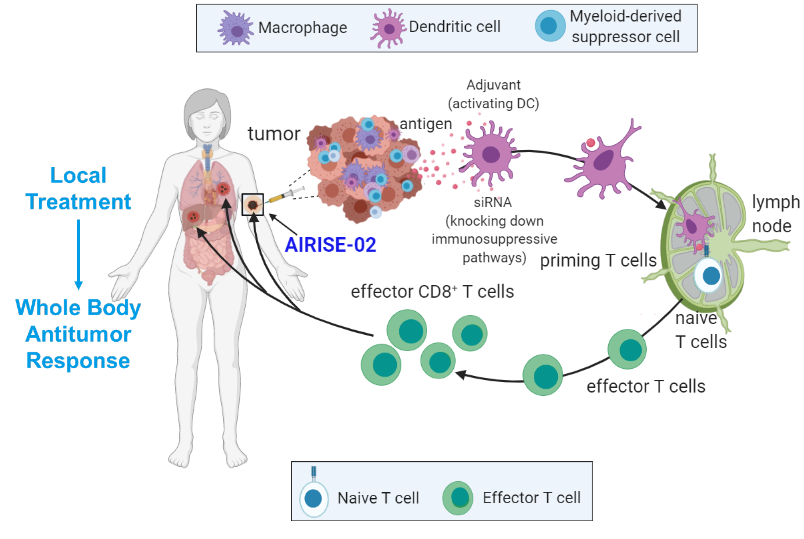
AIRISE utilizes a local treated tumor as a depot for neo-antigens in situ to trigger adaptive immunity (cytotoxic T cells) that kills tumors everywhere in the body.
AIRISE™ improves the effect of checkpoint inhibitors and raises survival rate.

Only 3 doses of AIRISE are effective in a bilateral melanoma mouse model.
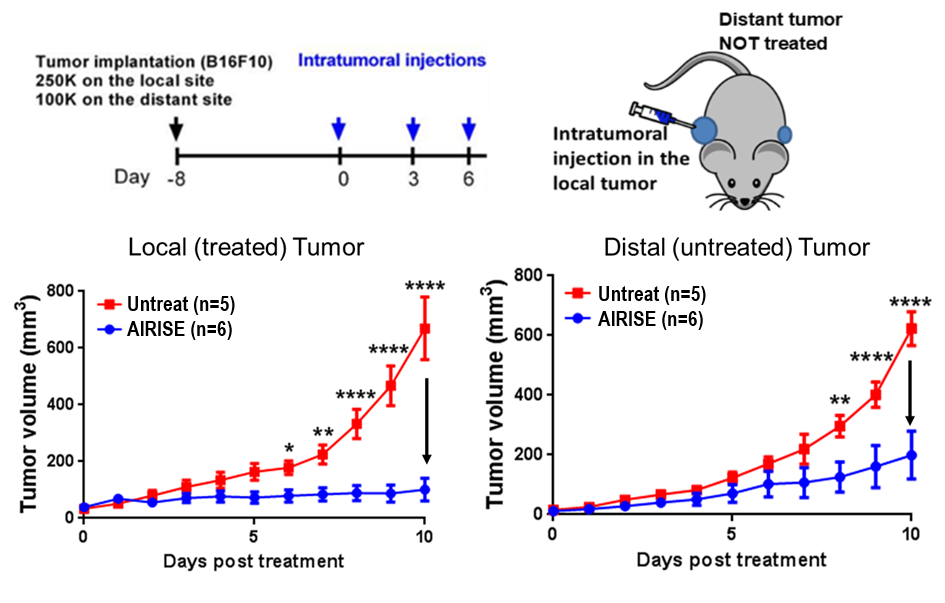
Both tumors were substantially reduced; owing to CD8+ T cell response (confirmed by CD8 depletion).
Mice were cured and were tumor-free for > 17 months even after tumor rechallenge, indicating memory T cell effect.
AIRISE-02 publication was featured as a cover article in Advanced Materials (IF 30.8).
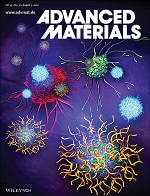
Publication: Ngamcherdtrakul, W., Reda, M., Nelson, M. A., Wang, R., Zaidan, H. Y., Bejan, D. S., Hoang, N. H., Lane, R. S., Luoh, S.-W., Leachman, S. A., Mills, G. B., Gray, J. W., Lund, A. W., Yantasee, W., In Situ Tumor Vaccination with Nanoparticle Co-Delivering CpG and STAT3 siRNA to Effectively Induce Whole-Body Antitumor Immune Response. Adv. Mater. 2021, 2100628. | Read Online
Funding: National Cancer Institute R44CA265751, 2021-2024
ARAC™ – Systemic Next Generation Cancer Immunotherapy for Broad Cancer Types
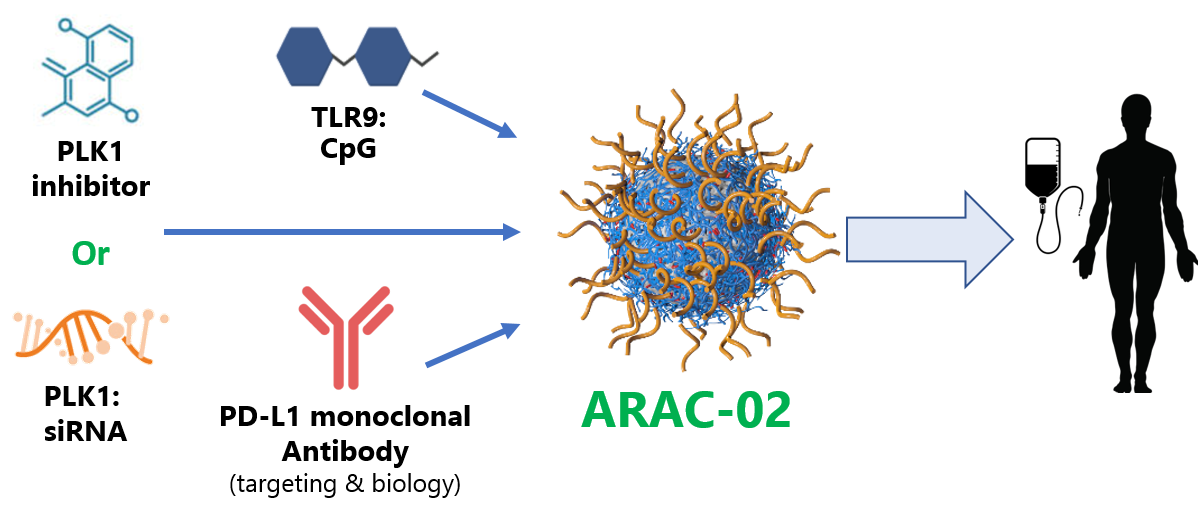
(Antigen Release Agent and Checkpoint inhibitor)
Nanoparticle co-delivering a kinase inhibitor and immunotherapy to kill cancer cells and unleash the power of the immune system.
ARAC-02 deploys various complementary strategies to invoke pronounced immune responses:
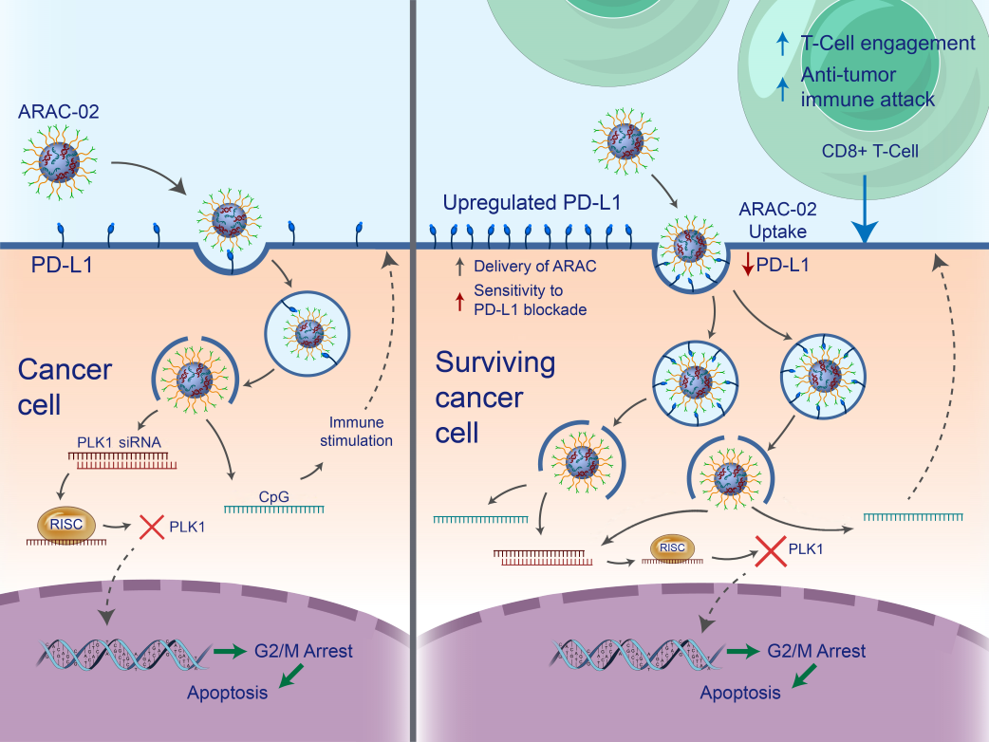
- PLK1 kills cancer cells, upregulating PD-L1 in surviving cells
- Facilitates additional tumor targeting via PD-L1 antibody
- Sensitizes tumors to PD-L1 inhibition
- CpG further primes immune system
- Cancer killing CD8+ T cells are generated, further amplifying the response
ARAC reduces the effective dose of drugs by 5-fold in a metastatic lung tumor model and the effect is immune (CD8) mediated.

ARAC reduces tumor growth and prolongs survival in ICI-refractory KLN-205 syngeneic tumor model.
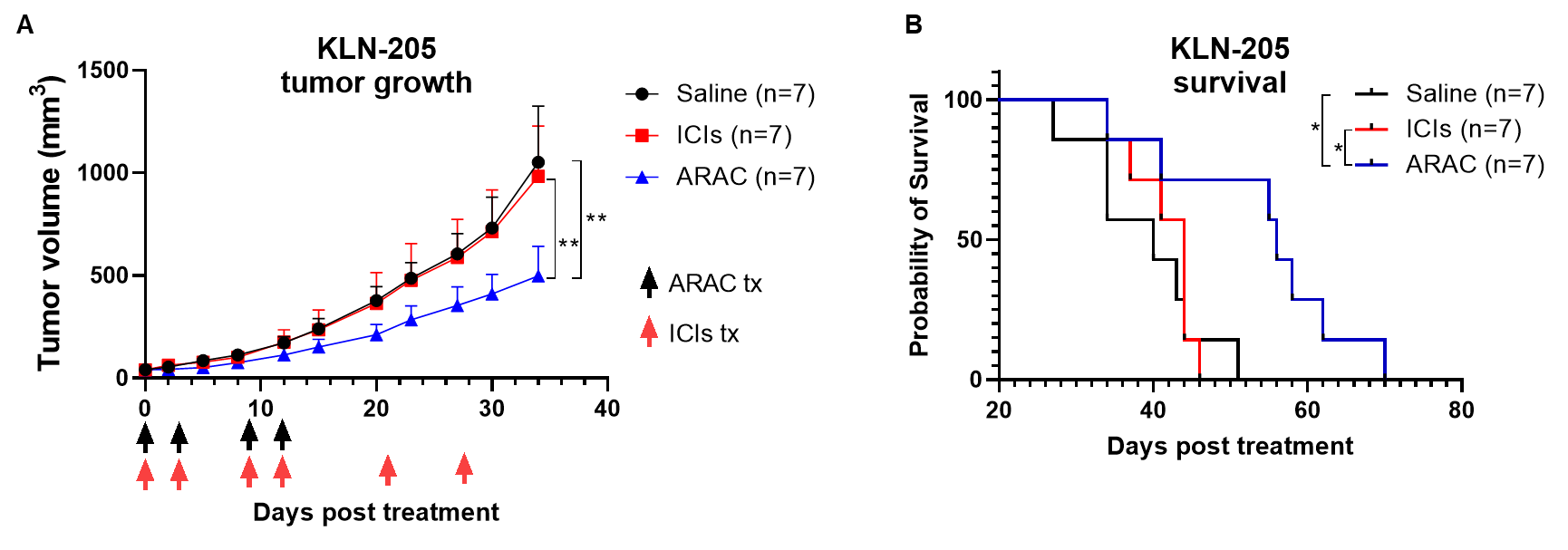
Adjuvant loaded ARAC-02 leads to cure of lung cancer in mice.
ARAC-02 treatment significantly improves survival of lung tumor (LLC-JSP) mice as compared to individual components and ARAC (without adjuvant).

Publication: Reda, M., Ngamcherdtrakul, W., Nelson, M. A., Siriwon, N., Wang, R., Zaidan, H. Y., Bejan, D. S., Reda, S., Hoang, N. H., Crumrine, N. A., Rehwaldt, J. P.C., Bindal, A., Mills, G. B., Gray, J. W., Yantasee, W., Development of novel nanoparticle-based immunotherapy targeting PD-L1 and PLK1 for lung cancer treatment. Nat. Commun. In press.
Funding: National Cancer Institute R44CA265752, 2021-2023
HER2 Targeted Therapy
Tumors over-expressing HER2 are known to be resistant or acquire resistant to current HER2 targeted therapies. We have developed nanoconstructs for targeted delivery of siRNA and chemotherapy for the treatment of cancer that over-express HER2.
Our nanoparticle platform (Pdx-NP™) can load multiple cargo types at once. The HER2-antibody conjugated on the nanoparticles will target HER2 receptors on the cells and enter the cells via endocytosis. High protein silencing efficacy using siRNA loaded on our nanoconstructs has been demonstrated both in vitro cell culture and in mice bearing breast cancer tumor xenograft. Once the HER2 had been silenced, tumor growth reduction in the mice was apparent. Data on this novel nano-therapeutic, T-siHER2-NP, is featured as a cover article in Advanced Functional Materials.
Additionally, our nanoparticle can load chemotherapeutic agent (docetaxel) in addition to HER2 siRNA and anti-HER2 antibody (Trastuzumab), and deliver them to breast tumor at once mirroring the standard treatment of HER2+ breast cancer. By co-delivering these therapeutics, T-siHER2-NP(DTX) can overcome resistance of HER2+ breast cancer to the first-line treatment regimen, while improving toxicity by specifically targeting HER2+ cells. Data on T-siHER2-NP(DTX) is featured as a cover article in Small Journal.
T-siHER2-NP(DTX)
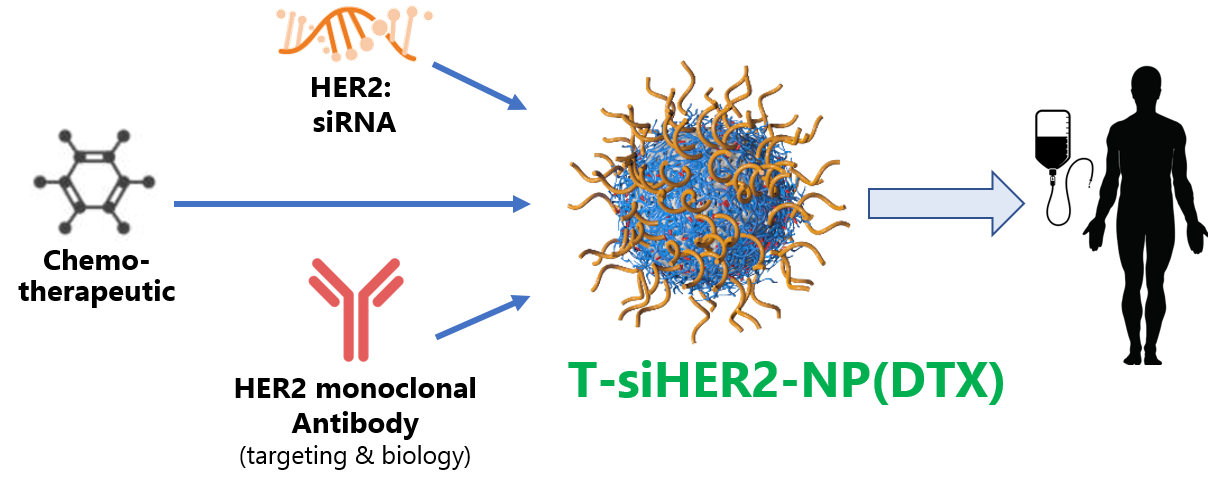
Nanoparticle (Pdx-NP™) loaded with 3 different classes of therapeutics, including HER2 siRNA, docetaxel (chemotherapeutic) and trastuzumab (anti-HER2 antibody).
Cellular specific uptake; efficient HER2 knockdown, and treatment specificity of T-siHER2-NP™
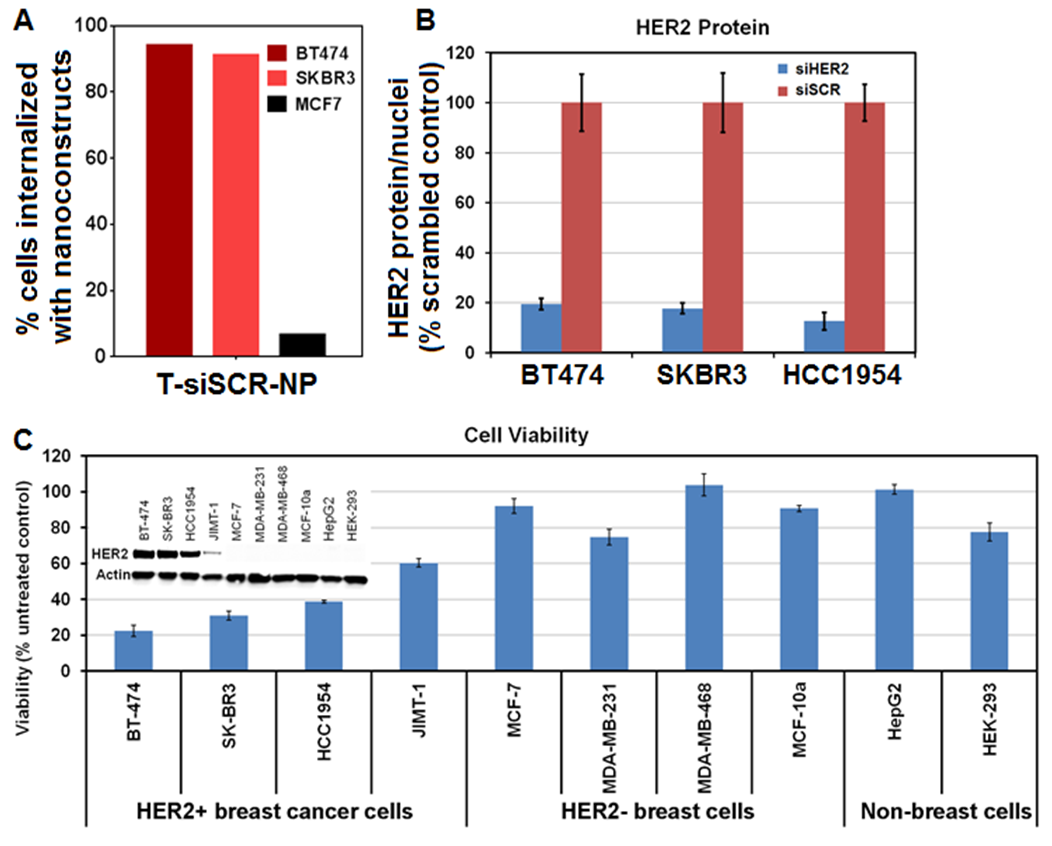
A. Specific uptake to HER2+ cells over low-HER2 cells; B. Knock down >80% of HER2 protein; and C. Specific killing of HER2+ cancer over low HER2 cells
T-siHER2-NP™ can inhibit two resistant HER2+ tumor

- HCC1954 tumors were resistant to Trastuzumab and taxane (A), but responded to T-siHER2-NP™ (B).
- 60% HER2 knock down in tumors after 1 dose (inset of B).
- BT474-TR tumors were resistant to Trastuzumab, but responded to T-siHER2-NP (C)
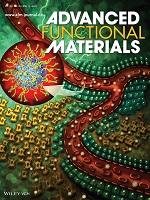
Publications:
Ngamcherdtrakul, W., Morry, J., Gu, S., Castro, D. J., Goodyear, S. M., Sangvanich, T., Reda, M. M., Lee, R., Mihelic, S. A., Beckman, B. L., Hu, Z., Gray, J. W., Yantasee, W. Cationic Polymer Modified Mesoporous Silica Nanoparticles for Targeted siRNA Delivery to HER2+ Breast Cancer. Advanced Functional Materials, 2015, 25(18), 2646-2659. View Cover | View PDF
Gu, S., Hu, Z., Ngamcherdtrakul, W., Castro, D.J., Morry, J., Reda, M., Gray, J.W., Yantasee, W. Therapeutic siRNA for drug-resistant HER2-positive breast cancer. Oncotarget, 2016, 7(12): 14727-14741. | View PDF
Targeted delivery of DTX by T-NP to HER2+ cancer cells enhanced docetaxel’s therapeutic index by about 2-fold.
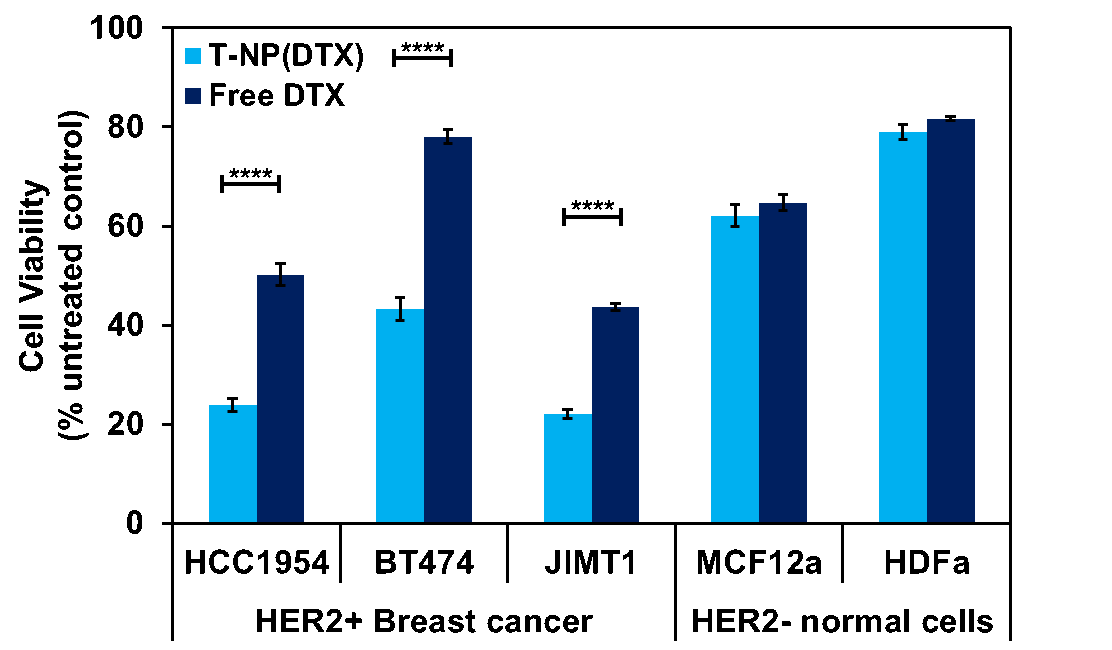
T-NP(DTX) was two-fold more toxic to HER2+ breast cancer cells than free DTX, but was not more toxic than free DTX to the low-HER2 cell lines (MCF12a and HDFa).
In vivo efficacy of systemic T-siHER2-NP(DTX) in mice bearing HER2+ breast tumors
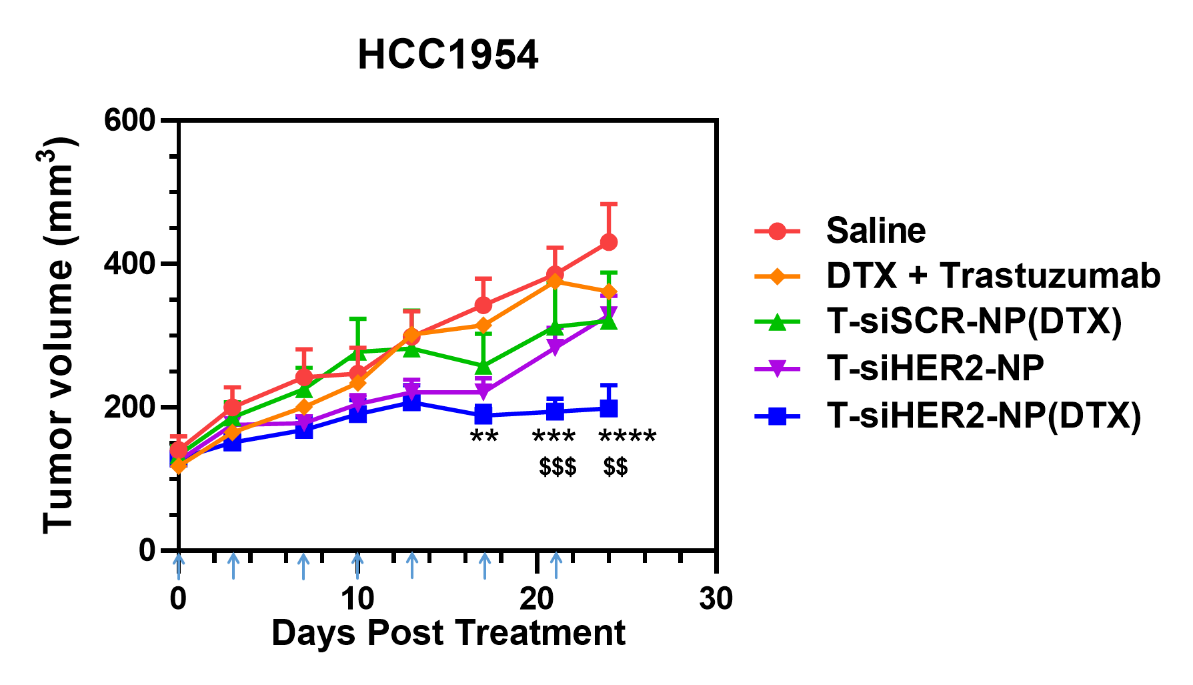
T-siHER2-NP(DTX) is more efficacious at inhibiting tumor growth than the T-NP delivering siHER2 or DTX alone.
T-siHER2-NP(DTX) also outperformed its free drug counterpart (DTX+Trastuzumab) delivered at the same dose.
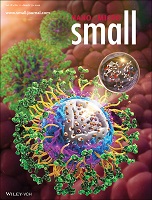
Publication:
Ngamcherdtrakul, W., Bejan, D. S., Cruz-Muñoz, W., Reda, M., Zaidan, H. Y., Siriwon, N., Marshall, S., Wang, R., Nelson, M. A., Rehwaldt, J. P. C., Gray, J. W., Hynynen, K., Yantasee, W., Targeted Nanoparticle for Co-delivery of HER2 siRNA and a Taxane to Mirror the Standard Treatment of HER2+ Breast Cancer: Efficacy in Breast Tumor and Brain Metastasis. Small 2022, 18, 2107550. View Cover | View Article
C-SIPLK1-NP™ to Augment Radiotherapy (RT)
Nanoparticle (PDX-NP™) loaded with cetuximab (EGFR-targeting antibody) and siRNA against PLK1.
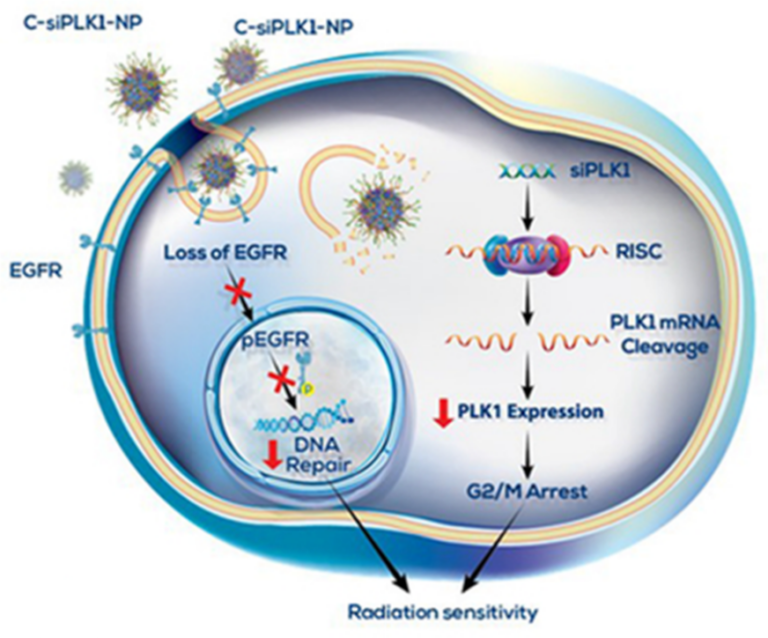
C-siPLK1-NP targets EGFR+ cancer cells and reduces PLK1 expression, resulting in reduced DNA repair capacity and G2/M arrest to sensitize cancer to radiotherapy.
C-siPLK1-NP enhances RT sensitivity in vivo.

The combination of C-siPLK1-NP and radiotherapy (RT) significantly reduced tumor growth compared with RT or C-siPLK1-NP alone in NSCLC tumor-bearing mice.
Publication:
Reda M, Ngamcherdtrakul W, Gu S, Bejan DS, Siriwon N, Gray JW, Yantasee W. PLK1 and EGFR targeted nanoparticle as a radiation sensitizer for non-small cell lung cancer. Cancer Lett. 2019 Dec 28;467:9-18. | View Online
SiHSP47-NP™ for treating fibrosis
Nanoparticle (PDX-NP™) loaded with siRNA against heat-shock protein 47 (HSP47).
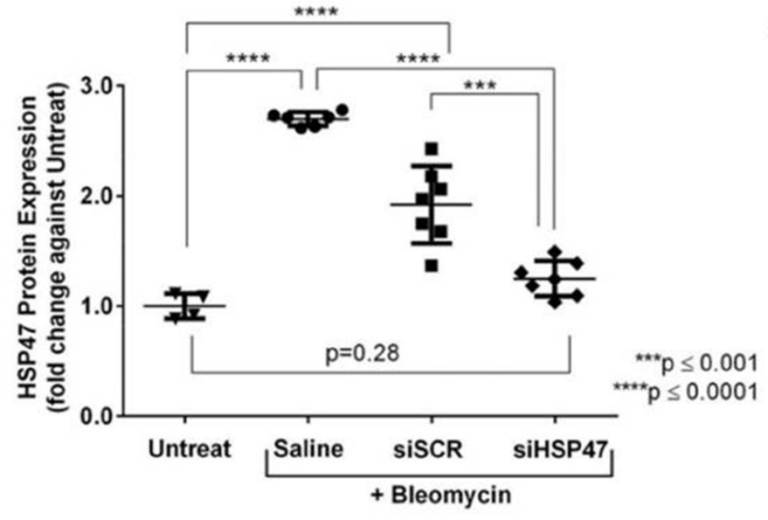
siHSP47-NP effectively reduced HSP47 protein expression in a bleomycin-induced scleroderma (skin fibrosis) mouse model.
The antioxidant mesoporous silica core also played a prominent role in reducing pro-fibrotic markers and skin thickness of the mice.
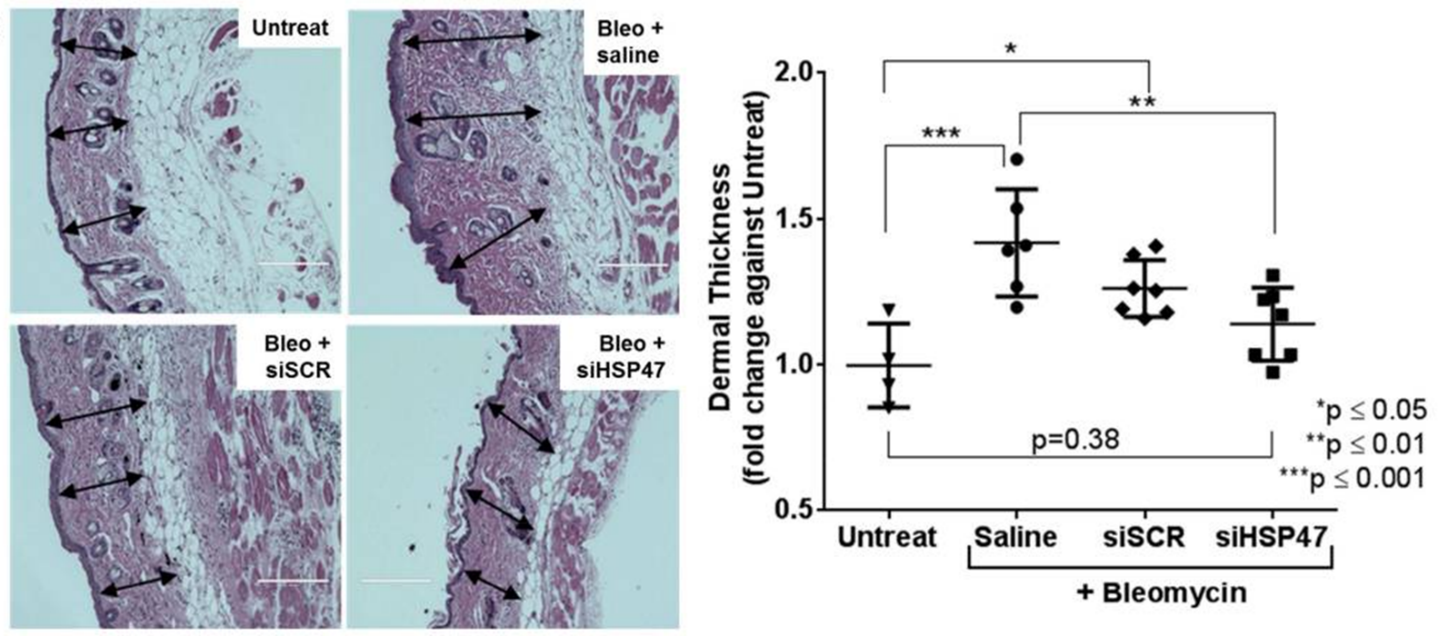
siHSP47-NP resulted in the reduction of dermal thickness by 19% (p≤0.01 vs. bleomycin alone), which brought the value down to the untreated level (p=0.38).
Publication:
Morry J, Ngamcherdtrakul W, Gu S, Goodyear SM, Castro DJ, Reda MM, Sangvanich T, Yantasee W. Dermal delivery of HSP47 siRNA with NOX4-modulating mesoporous silica-based nanoparticles for treating fibrosis. Biomaterials. 2015 Oct;66:41-52. | View Online
AIRISE-COV™: COVID-19 Vaccine
(Nanoparticle-based Augmenting Immune Response and Inhibiting Suppressive Environment)
AIRISE-CoV™ is AIRISE™ delivering an antigen of SARS-CoV-2 virus (virus that causes COVID-19). AIRISE™ is capable of modulating immunosuppression and is anticipated to be an effective vaccine in immunocompromised, elderly, and healthy populations.
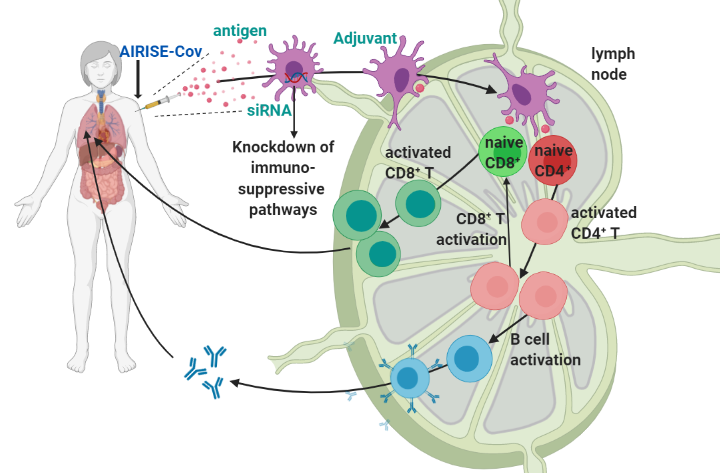
AIRISE-CoV™ induces antibodies against SARS-CoV-2 protein in serum of mice.
End-point titer (black arrows) represents the number of fold serum dilutions where SARS-CoV-2 binding antibodies are still detectable (4X background signal). The higher the titers, the higher the antibody level is. AIRISE-CoV™ elicited end-point titers of 105 and 106 after first and second dose, which are very high compared to 102-105 by other leading COVID-19 vaccine candidates (e.g. mRNA-1273 by Moderna, ChAdOx1 nCoV-19 by AstraZeneca/Oxford, INO-4800 by Inovio, NVX-CoV2373 by Novavax).